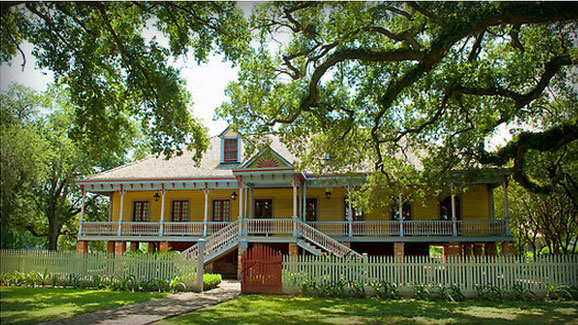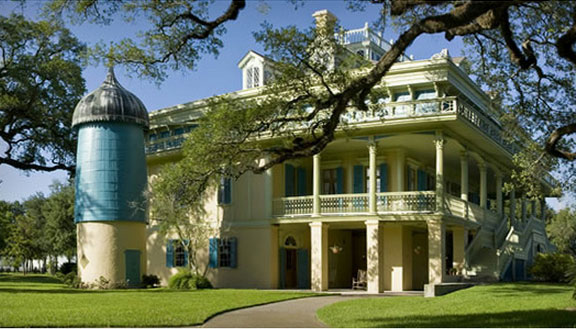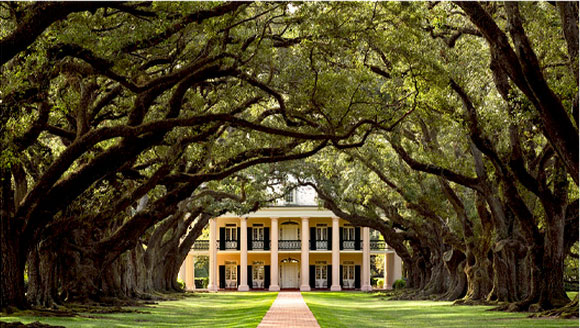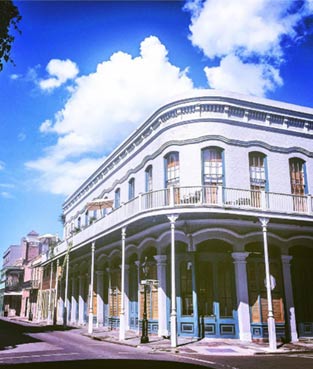Close your eyes for a moment. Imagine you’re sitting on a wide wooden porch, crisp breeze blowing through the wooden railing. Maybe you’re sipping a cool mint julep. The porch overlooks a grand vista: twin lines of majestic oaks disappearing into the distance, gardens fading into fields on either side.
This was plantation life for some in the early 19th century. For others, it was decidedly less comfortable. These were the slaves who could be seen in the distant fields, working twelve or more hours each day under the Southern sun. Slaves were the backbone of the plantation. Without them, nothing was grown, built or cooked.
Today’s Experience New Orleans blog celebrates both the glory of pre-war plantations, and the emancipation of their slaves. Why? Because today is June 19, better known as Juneteeth–the anniversary of the summer day in 1865 when Union troops rode into Galveston, Texas, and demanded the enforcement of Lincoln’s Emancipation Proclamation. Slaves had technically been free for over two years; in reality, not much had changed. But on that June day, beginning with Texan slaves, freedom finally came to the South.
Many historic plantations still serve as preserved reminders of the South’s conflicted past, offering tours to shed more light on the plantation way of life and the longstanding institution of slavery. It’s possible to appreciate the beauty of these landmarks while not overlooking those who labored to create them, and all travelers to New Orleans should visit a plantation or two. Here are some of the best and most beautiful Louisiana plantations open for tours and visits.
Laura Plantation
Journey to St. James Parish to see one of the last remaining Louisiana Creole-style plantations. Originally constructed in 1805, Laura is the ideal destination to start a plantation tour, because it includes a number of surviving outbuildings, including six slave quarters serving as a testament to the plantation slave’s daily life. The current owners have furnished much of Laura with period antiques, and left other areas unrestored to show the house’s brick-and-post construction. At one point, Laura Plantation’s vast reach included over 12,000 acres of sugarcane fields, a sugar mill, an infirmary, and 69 slave cabins. Laura’s “Creole Family Saga” tour was named Best History Tour in the U.S. by Lonely Planet Travel Guide.
San Francisco Plantation
Painstakingly restored to its 1860s opulence, the unusually named San Francisco Plantation is said to take its moniker from its second heir’s financial trouble–he was sans fruscins, or without a penny, when he took over managing his father’s estate. Sans fruscins turned to St. Frusquin, and eventually to San Francisco in 1879. The property’s extravagant architecture, conceived by original builder Edmond Bozonier Marmillon, is atypical of usual plantation houses of the period. From 1973 to 1976, every detail of San Francisco was researched and recreated to offer visitors immersion in the peak period of sugarcane plantation life.
Oak Alley Plantation
The South’s most photographed plantation, Oak Alley is famous for its twenty-eight magnificent ancient oaks, which line a stately path to the French Creole mansion. The plantation survived the Civil War without physical damage, but received no care until it passed into the hands of Andrew and Josephine Stewart, who lived at Oak Alley and restored it to its former grandeur. Visitors can stay overnight here, a rare treat among historic plantation offerings. The Oak Alley Foundation, which administers the plantation, has recently announced a commitment to deeper exploration and discussion of the plantation’s slave life and population.
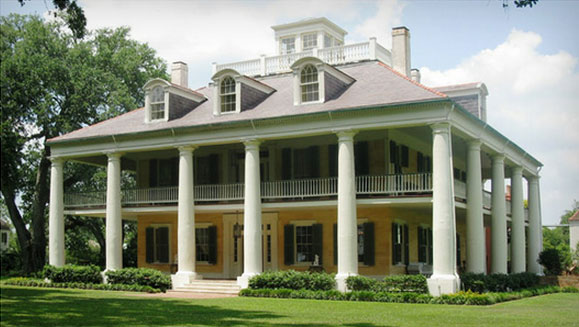 Houmas House Plantation
Houmas House Plantation
The “Crown Jewel of Louisiana’s River Road,” Houmas House was acquired in 1810 by Revolutionary War General Wade Hampton, but the property’s palatial mansion was not completed until 1828. During the plantation’s most active years, 98,000 acres of sugarcane were actively farmed, making Houmas House the United States’ largest sugar producer. At one point, Houmas House produced a staggering 20 million pounds of sugar per year. The plantation’s 38 acres feature beautifully landscaped gardens, planted year-round to emphasize the beauty of the house and grounds, as well as multiple restaurants and a bar for after-tour refreshment.
Faring better than dozens of their contemporaries, these four landmark plantations have endured for over 200 years. In their construction, traditions and history, they offer a glimpse of a vastly different time. New Orleans herself was inextricably tied to plantation life and industry, and no visit to the Crescent City is complete without viewing at least one plantation. Happy Juneteenth!
How do you celebrate Juneteenth? Which plantations have you visited? Tell us on Google+, Facebook or Twitter.


